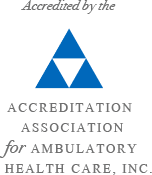What You Want to Know About Your Colonoscopy

At some point in your life, your doctor will recommend that you have a colonoscopy. This screening may be performed to find the potential cause of changes in bowel habits, rectal bleeding, or abdominal pain. It is also a preventive screening that adults are advised to have done starting at age 45. During the colonoscopy, the doctor can observe and remove, if necessary, abnormal growths before they can become cancerous.
If you've been told that you need a colonoscopy, you may feel concerned about the test. Many people think this procedure will be pretty awful. It's not. Thanks to sedation, patients are comfortable and, often, fall asleep.
What Happens Before a Colonoscopy?
Before undergoing this test, your doctor will want to know if you have a medical condition such as heart disease, kidney disease, a lung condition, or allergies to medications. Your doctor should be informed if you have diabetes, might be pregnant, or take any medication or supplements that might affect blood clotting. It may be necessary to alter certain medications to ensure that the colonoscopy can be performed safely.
One of the primary aspects of preparing for a colonoscopy is to have a clean colon. Patients are instructed to restrict their diet starting at least 24 hours before their appointment. Usually, this includes avoiding solid foods. Liquids such as broth, sports drinks, water, and coffee without cream may be acceptable. The bowel must also be emptied prior to the colonoscopy. This may be achieved by taking a prescribed laxative or via a combination of laxatives and enemas. Finally, it is necessary to arrange to have someone drive you to your colonoscopy appointment. Because you will be sedated, you will not be able to drive in the 8 hours following your procedure.
How the Colonoscopy is Performed
After you are positioned on your left side on the table, you will receive sedative medication via an IV in your arm. Before the doctor begins, you will be asleep. The doctor inserts a very narrow colonoscope into the rectum. The tube is long but measures only about half an inch wide. The colonoscope has a light and video camera on the end, which makes the lining of the colon easily visible. The instrument can also inflate the colon with a little air to improve the visualization of the lining. During the exam, the scope may collect tiny samples of tissue or may be used to remove polyps. After the exam, you will stay in a recovery room for a short time to allow the sedative to wear off.
Having a colonoscopy can be somewhat scary. We understand, and we treat each of our patients with respect and gentleness. To schedule your colonoscopy at Gramercy Park Digestive Disease Center in NYC, contact us today. We have two convenient locations to serve you.


